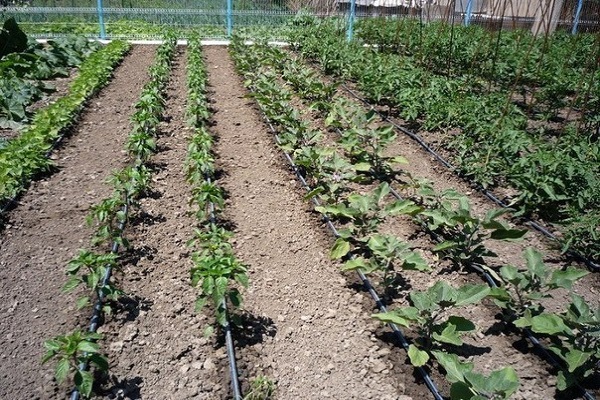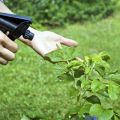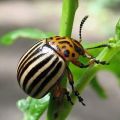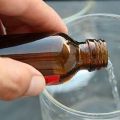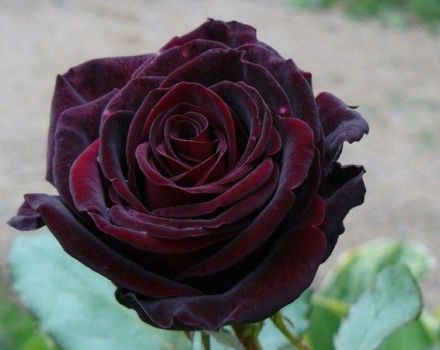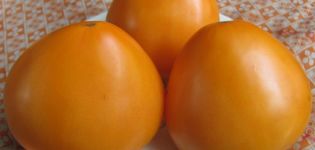How to use ammonia against the Colorado potato beetle on potatoes
To get rid of the Colorado potato beetle on potatoes will help such a simple remedy as ammonia. Constant pest control is a problem for people who work in the soil. An insect attack affects the quantity of the crop and its quality. Despite the large assortment of preparations for exterminating insects, experienced summer residents continue to use ammonia and do it with great success.
Content
- 1 Why this remedy
- 2 How does ammonia from the Colorado potato beetle work on potatoes?
- 3 Application features
- 4 How to prepare the solution?
- 5 Ammonia and Coca-Cola against the Colorado potato beetle
- 6 Fertilizing potatoes with ammonia
- 7 Other ways to deal with the Colorado potato beetle
- 8 Prevention against the beetle
- 9 Feedback from our readers
Why this remedy
The agricultural market is ready to offer a lot of insecticidal preparations. They are effective against voracious beetles. However, they are dangerous not only for root crops, but also for the person himself. Because of this, gardeners prefer traditional medicine, one of which is ammonia.

The ammonia solution scares away beetles, and is also an excellent feed for tubers. As a result, insect control ends up with benefits for the plants. The effectiveness of the action lies in a strong and sharp aroma that repels pests. Due to the poor persistence of ammonia, the treatment is repeated after 1.5–2 weeks.
How does ammonia from the Colorado potato beetle work on potatoes?
The ammonia solution begins to act immediately after it hits the bush. Its smell is so strong that the pests are trying to quickly leave the bushes. As a rule, after 5-7 days there will be no Colorado potato beetles on the potatoes. Thanks to this action, ammonia is considered one of the most popular drugs.
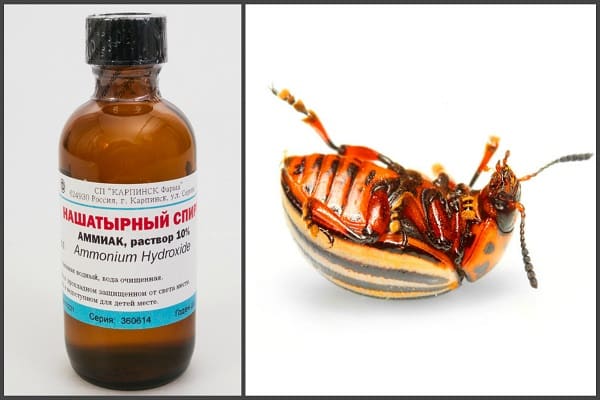
Application features
You can use ammonia against insects in various ways. The solution is carefully applied to the root, which allows you to quickly get rid of the beetle. You can also make homemade traps using ammonia. To do this, you need to take strips of cloth and moisten them in the solution.
Ready-made devices are placed between the potato beds. A pungent smell spreads over the entire plot of land. The Colorado potato beetle smells ammonia and tries not to approach the potatoes. In windy weather, the effect increases several times.
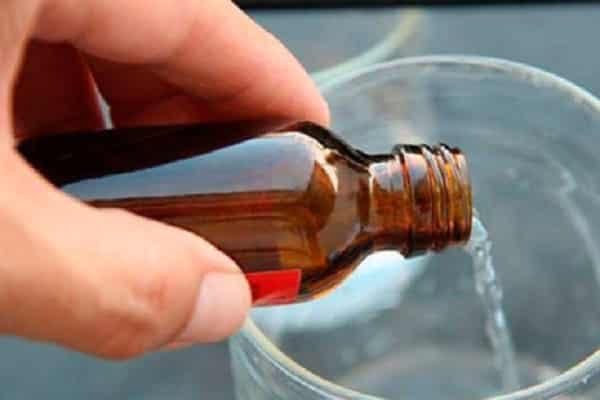
Spraying is considered no less effective. For this, ammonia in the form of a solution is diluted in water. Laundry soap is used as an additional ingredient. Before adding to the liquid, it must be chopped with a knife or grated.
Thanks to the soap, the mixture with ammonia stays on the leaves for a long time, and continues to scare off Colorado beetles with a smell. He cannot eat potatoes covered with ammonia solution, and escapes in search of other suitable territories. Clutches of eggs under the leaves also die over time. This method prevents the emergence of larvae and adults.
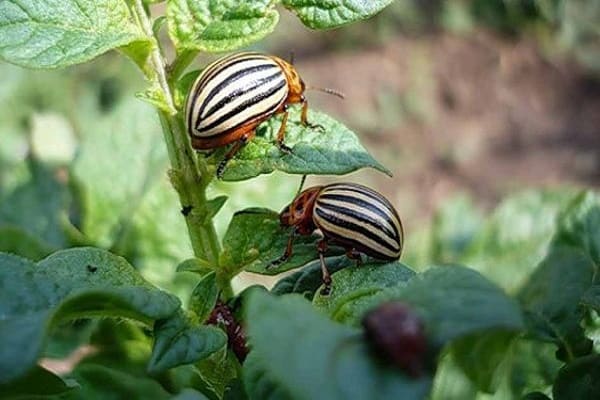
How to prepare the solution?
The cooking recipe depends on the method of use.
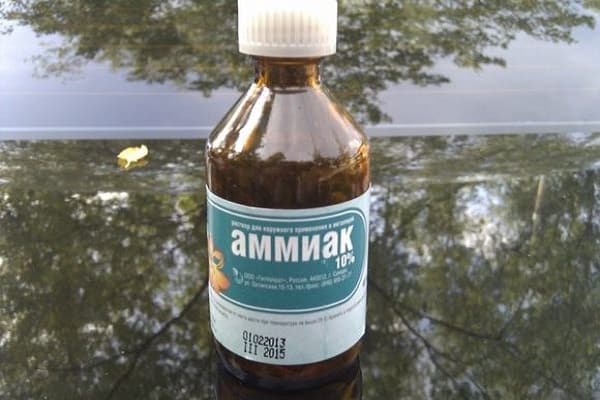
Under the bush
For a bucket of water you need to take 3-5 tbsp. l. ammonia solution. Stir the liquid thoroughly so that all components are combined. Then the ammonia is added to the root. Under one bush, you must pour at least 0.5 liters.

Scare traps
For traps, take fabrics from any material. They are cut into even strips and moistened in an ammonia solution - 3% is enough. After the fabric has absorbed a sufficient amount of ammonia, they are distributed between the beds throughout the area. The beetle smells and runs away.
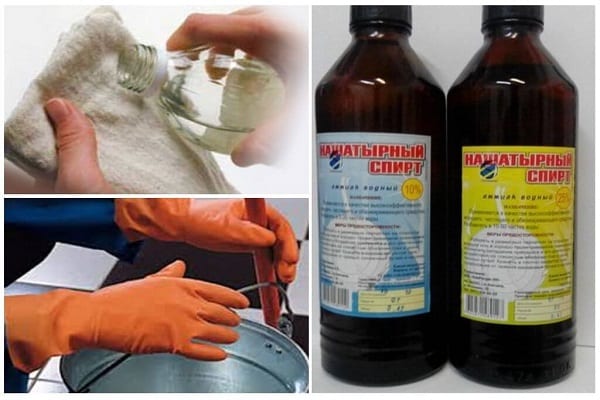
Spraying plants
Ammonia is diluted in water - 500 ml of substance goes to 10 liters. Another option is 50 ml of ammonia per bucket of water. Before spraying the bushes with beetles, add less than half of the laundry soap. To make it dissolve faster and mix with the rest of the components, it is crushed.
A good alternative to spraying is considered to be watering with a wide nozzle. The sprayer works in such a way that most of the liquid is volatilized.
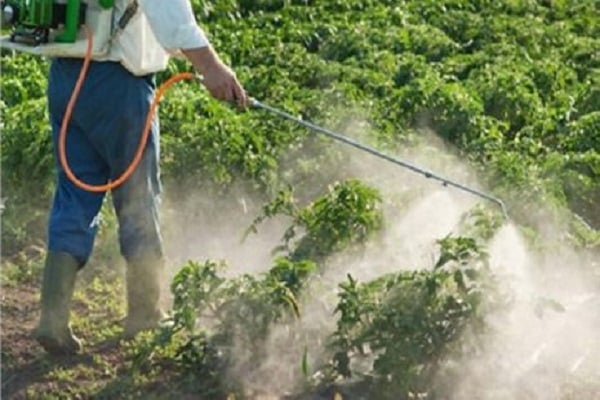
When to carry out the procedure
The most appropriate time to use ammonia solution against the Colorado potato beetle is morning or evening. It is desirable that on the selected days there is no wind and precipitation in the form of rains. The procedure is repeated as necessary if the pest begins to appear on the bushes again. As a rule, from 2 to 3 sprays with a solution of ammonia are carried out per month.

Precautions
Ammonia is characterized by a pungent specific odor that beetles do not like. As it turned out, ammonia also negatively affects the human body. To avoid poisoning, the solution is prepared outside. All the time a person is working with the drug must be in a respirator.
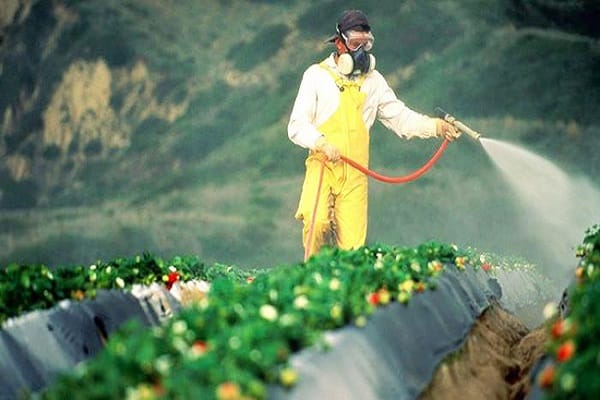
Ammonia and Coca-Cola against the Colorado potato beetle
In addition to ammonia, there is another remedy that also chases the insect from the beds with lightning speed. This is the popular Coca-Cola drink. One of the ingredients is phosphoric acid - a real poison for parasites. In turn, phosphorus is an important component in the preparation of insecticides. The effect of the use of ammonia solution becomes noticeable after 5–8 days.
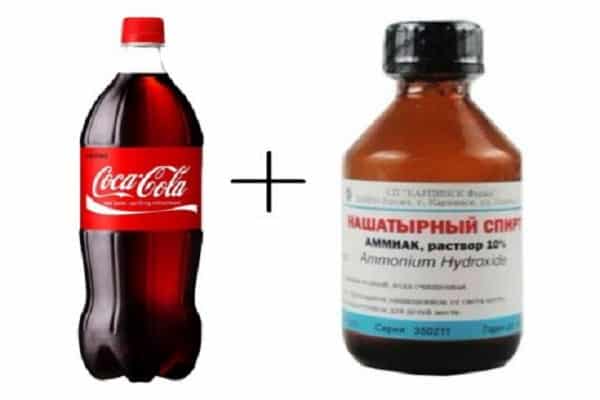
How to prepare the solution?
There are 2 options for preparing the solution. In this matter, the degree of damage to the vegetable by the Colorado potato beetle plays an important role:
- If pests have just begun to appear on the beds, they are chased away with a solution of weak concentration. In this case, only water and Coca-Cola are taken in equal parts.
- A moderate or severe degree of damage requires the preparation of a drink with an increased concentration. There is 1 liter of water for 5 liters of sweet Cola.
The liquid is sprayed on the leaves on both sides. In no case should you spray on flowers and buds. The drink can be used separately from other anti-bug ingredients. If the liquid is prepared on the basis of Coca-Cola and water, the composition should not contain other components, especially ammonia.

Fertilizing potatoes with ammonia
An ammonia-based solution has established itself as a good vegetable feed. Contains a large amount of nitrogen. The ammonia solution promotes the formation of chlorophyll. Thanks to this, in cloudy weather, potato bushes will not suffer from a small amount of sunlight.
The need for nitrogen can be determined by the following signs:
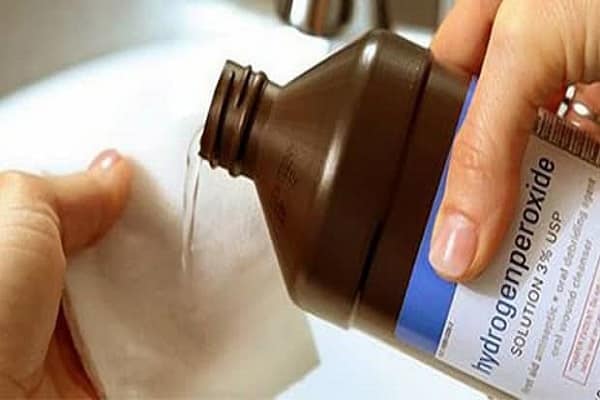
- poor shoot growth;
- small leaves with an underdeveloped structure;
- in the lower part, the bush is covered with yellowed foliage;
- thin stems.
Nitrogen is a substance that has tremendous cultural benefits. But in this regard, you must adhere to accuracy. If you add too much ammonia solution, the effect is reversed. The bush becomes more lush and the tubers decrease in size.

Ammonium also affects their quantity - it decreases.
Other ways to deal with the Colorado potato beetle
In addition to ammonia and Coca-Cola, other equally popular traditional medicines are also used. This can be wood ash, onion husks, or tar. Urea is considered no less effective. Solutions are prepared from these components or used in pure form.

Prevention against the beetle
Recipes for scaring off the Colorado potato beetle, which are based on ammonia, are time-tested. They remain relevant to this day. But this does not mean that one procedure with a solution will help solve the problem with an infestation of beetles. It is necessary to periodically treat potatoes with ammonia to deprive the Colorado beetles of the opportunity to feed on them.
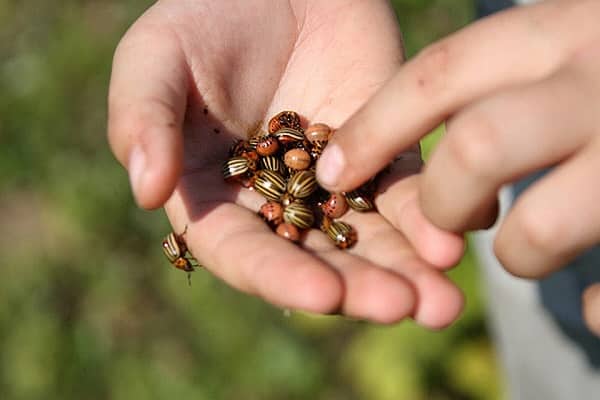
Feedback from our readers
Mikhail: “I don’t want to use chemicals, so I risked trying ammonia. What was my surprise, the method really works. They will always use only ammonia solution. The only drawback is repeated spraying, as the smell disappears over time, and the Colorado potato beetle returns. "
Aleksey: “Every year I am surprised at the state of the potatoes that grow on the land of the neighbors. They do not have a single beetle, not that I have a whole riot. I decided to find out their secret. It turns out that the whole thing is in ammonia. Now I know the recipe and will try it in my garden. "
